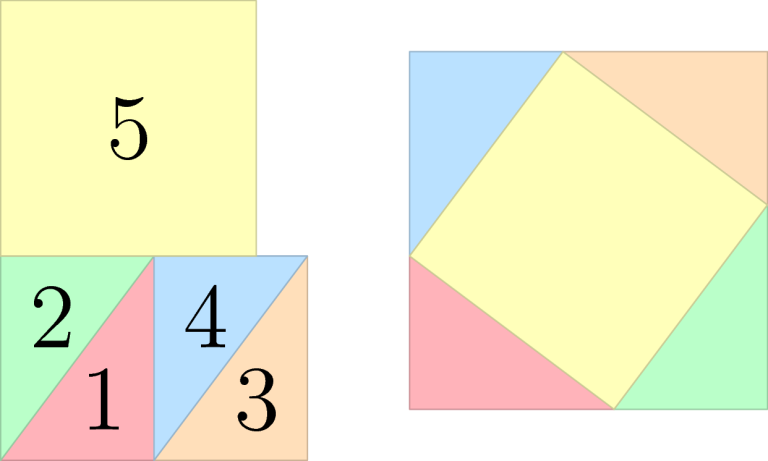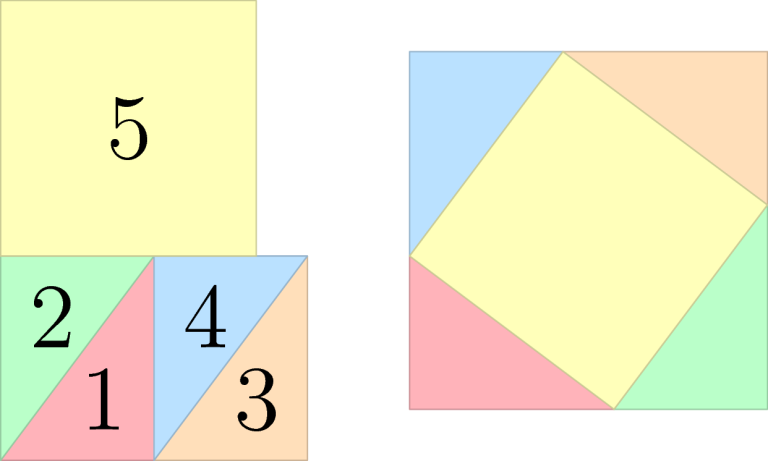CF1193C.Scissors and Tape
普及/提高-
通过率:0%
AC君温馨提醒
该题目为【codeforces】题库的题目,您提交的代码将被提交至codeforces进行远程评测,并由ACGO抓取测评结果后进行展示。由于远程测评的测评机由其他平台提供,我们无法保证该服务的稳定性,若提交后无反应,请等待一段时间后再进行重试。
题目描述
The first line contains the source shape S .
The second line contains the target shape T .
Each shape has between 3 and 10 points, inclusive. Both shapes are given in the format specified above.
All coordinates in the input are integers between −106 and 106 , inclusive.
In each shape, no three points form an angle smaller than 3 degrees. (This includes non-consecutive points and implies that no three points are collinear.)
The polygons P(S) and P(T) have the same area.
输入格式
Whenever you use the scissors operation, output a block of lines of the form:
<pre class="verbatim"><br></br>scissors<br></br>id(A) k<br></br>B_1<br></br>B_2<br></br>...<br></br>B_k<br></br>
where id(A) is the ID of the shape you want to destroy, k is the number of new shapes you want to produce, and B1,…,Bk are those shapes.
Whenever you use the tape operation, output a block of lines of the form:
<pre class="verbatim"><br></br>tape<br></br>k id(A_1) ... id(A_k)<br></br>C_1<br></br>C_2<br></br>...<br></br>C_k<br></br>B<br></br>
where k is the number of shapes you want to tape together, id(A1),…,id(Ak) are their IDs, C1,…,Ck are equivalent shapes showing their position within B , and B is the final shape obtained by taping them together.
It is recommended to output coordinates of points to at least 10 decimal places.
The output must satisfy the following:
- All coordinates of points in the output must be between −107 and 107 , inclusive.
- Each shape in the output must have at most 100 points.
- In each operation the number k of shapes must be between 1 and 100 , inclusive.
- The number of operations must not exceed 2000 .
- The total number of points in all shapes in the output must not exceed 20000 .
- In the end, there must be exactly one shape (that hasn't been destroyed), and that shape must be equivalent to T .
- All operations must be valid according to the checker. Solutions with small rounding errors will be accepted. (Internally, all comparisons check for absolute or relative error up to 10−3 when verifying each condition.)
Scoring
A shape is called a nice rectangle if it has the form ((0,0), (x,0), (x,y), (0,y)) for some positive integers x and y .
A shape is called a nice square if additionally x=y .
A shape A is called strictly convex if all inner angles of the polygon P(A) are smaller than 180 degrees.
Subtask 1 (5 points): S and T are nice rectangles. All coordinates of all points are integers between 0 and 10, inclusive
Subtask 2 (13 points): S is a nice rectangle with x>y , and T is a nice square
Subtask 3 (12 points): S and T are nice rectangles
Subtask 4 (14 points): S is a triangle and T is a nice square
Subtask 5 (10 points): S and T are triangles
Subtask 6 (16 points): S is a strictly convex polygon and T is a nice rectangle
Subtask 7 (11 points): T is a nice rectangle
Subtask 8 (19 points): no additional constraints
输出格式
The figure below shows the first example output. On the left is the original figure after using the scissors, on the right are the corresponding Ci when we tape those pieces back together.

In the second example output, note that it is sufficient if the final shape is equivalent to the target one, they do not have to be identical.
The figure below shows three stages of the third example output. First, we cut the input rectangle into two smaller rectangles, then we cut the bigger of those two rectangles into two more. State after these cuts is shown in the top left part of the figure.
Continuing, we tape the two new rectangles together to form a six-sided polygon, and then we cut that polygon into three 2-by-1 rectangles and one smaller rectangle. This is shown in the bottom left part of the figure.
Finally, we take the rectangle we still have from the first step and the four new rectangles and we assemble them into the desired 3-by-3 square.

输入输出样例
输入#1
6 0 0 6 0 6 4 5 4 5 9 0 9 4 0 0 7 0 7 7 0 7
输出#1
scissors 0 5 3 0 0 3 0 3 4 3 3 4 0 4 0 0 3 3 0 6 0 6 4 3 6 4 3 4 3 0 4 0 4 5 4 5 9 0 9 tape 5 1 2 5 3 4 3 0 3 0 0 4 0 3 4 0 7 0 7 4 4 0 3 4 0 7 4 3 7 3 7 4 7 7 3 7 3 3 7 0 7 0 3 4 0 0 7 0 7 7 0 7
输入#2
4 0 0 3 0 3 3 0 3 4 7 -1 10 -1 11 2 8 2
输出#2
scissors 0 2 3 0 0 1 3 0 3 4 1 3 0 0 3 0 3 3 tape 2 1 2 3 110 -1 111 2 110 2 4 108 2 107 -1 110 -1 110 2 4 107 -1 110 -1 111 2 108 2
输入#3
4 0 0 9 0 9 1 0 1 4 0 0 3 0 3 3 0 3
输出#3
scissors 0 2 4 1.470000000 0 9 0 9 1 1.470000000 1 4 0 0 1.470000000 0 1.470000000 1 0 1 scissors 1 2 4 1.470000000 0 6 0 6 1 1.470000000 1 4 9 0 9 1 6 1 6 0 tape 2 4 3 4 3 2 3 1 6 1 6 2 4 6 1 1.470000000 1 1.470000000 0 6 0 6 1.470000000 0 6 0 6 2 3 2 3 1 1.470000000 1 scissors 5 4 4 1.470000000 0 3 0 3 1 1.470000000 1 4 3 0 4 0 4 2 3 2 4 4 2 4 0 5 0 5 2 4 5 0 6 0 6 2 5 2 tape 5 2 6 7 8 9 4 0 0 1.470000000 0 1.470000000 1 0 1 4 1.470000000 0 3 0 3 1 1.470000000 1 4 0 2 0 1 2 1 2 2 4 0 2 2 2 2 3 0 3 4 3 3 2 3 2 1 3 1 4 0 0 3 0 3 3 0 3
说明/提示
The figure below shows the first example output. On the left is the original figure after using the scissors, on the right are the corresponding Ci when we tape those pieces back together.

In the second example output, note that it is sufficient if the final shape is equivalent to the target one, they do not have to be identical.
The figure below shows three stages of the third example output. First, we cut the input rectangle into two smaller rectangles, then we cut the bigger of those two rectangles into two more. State after these cuts is shown in the top left part of the figure.
Continuing, we tape the two new rectangles together to form a six-sided polygon, and then we cut that polygon into three 2-by-1 rectangles and one smaller rectangle. This is shown in the bottom left part of the figure.
Finally, we take the rectangle we still have from the first step and the four new rectangles and we assemble them into the desired 3-by-3 square.
